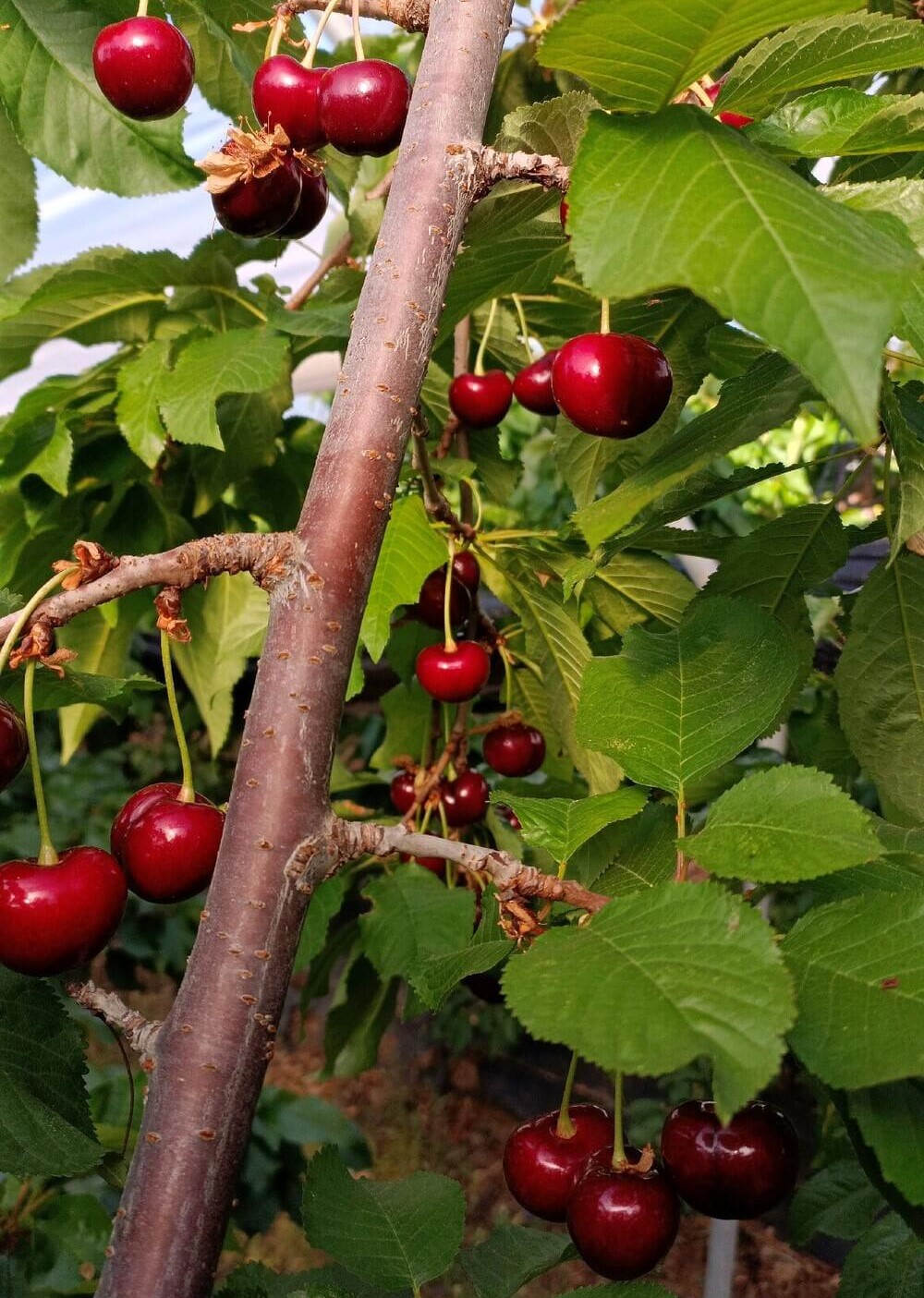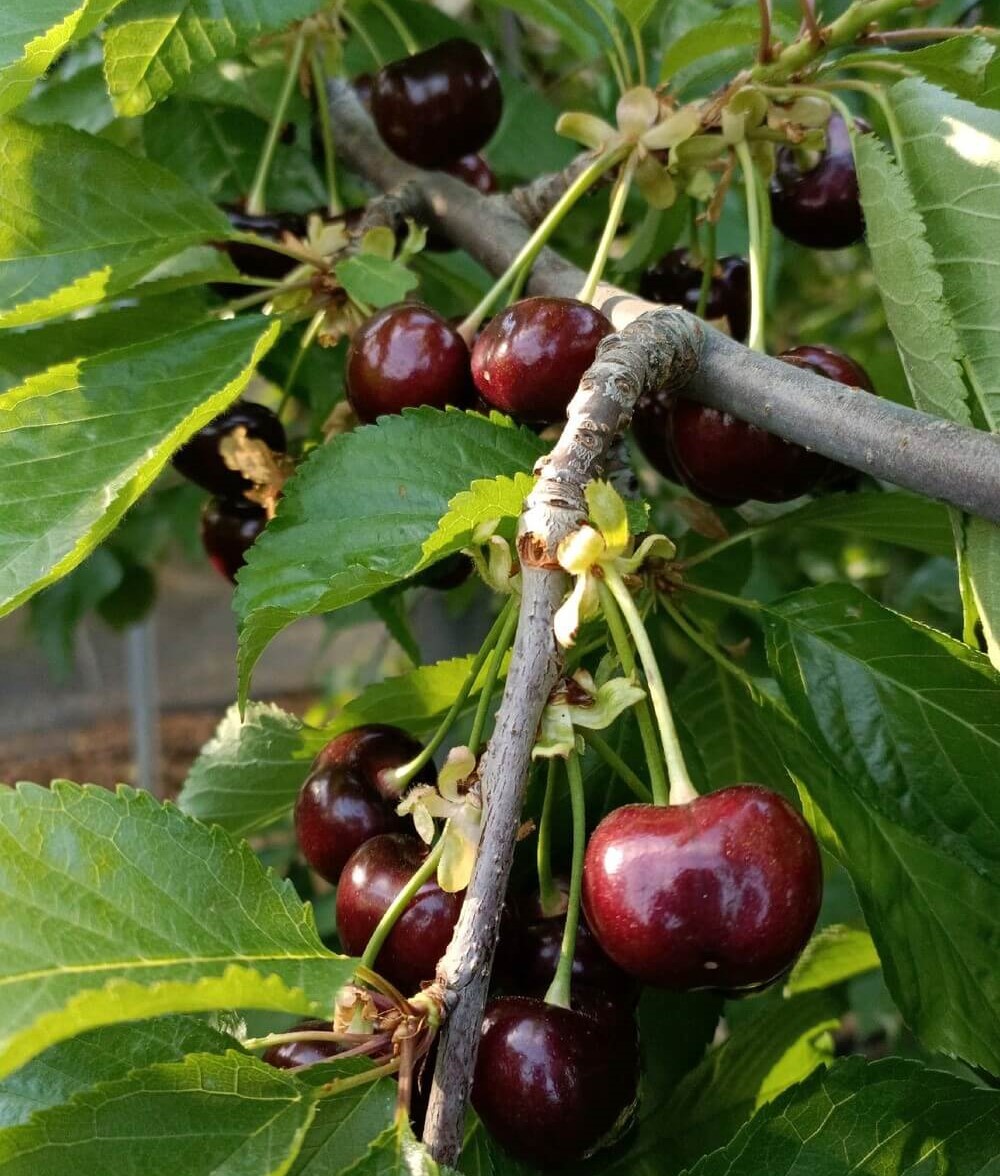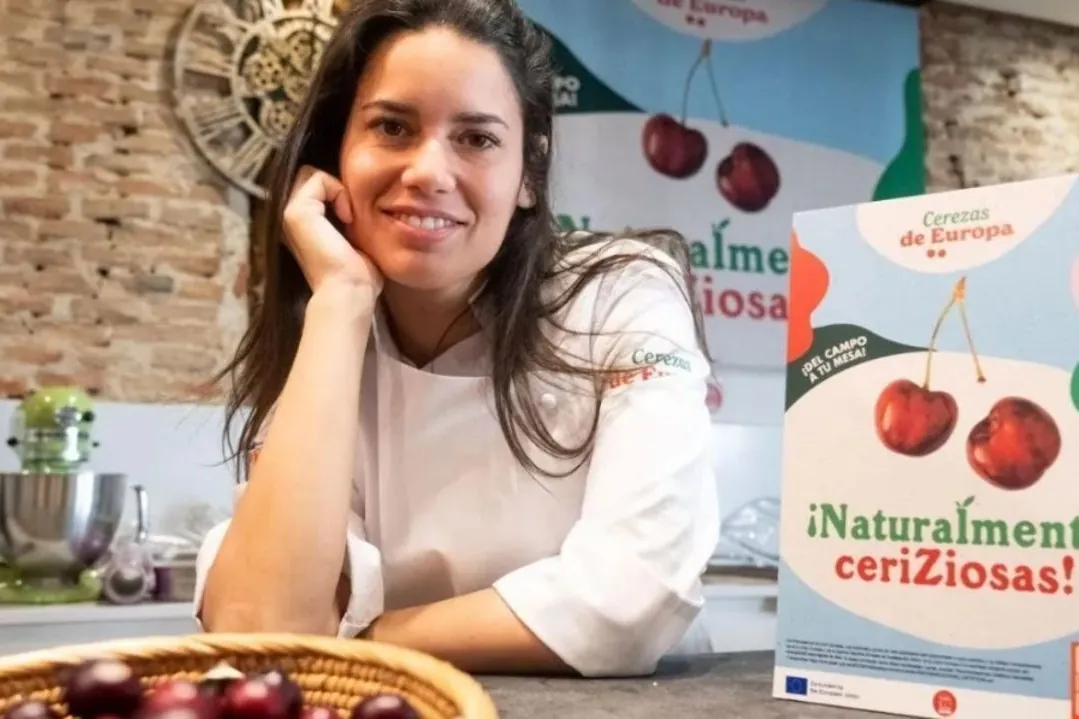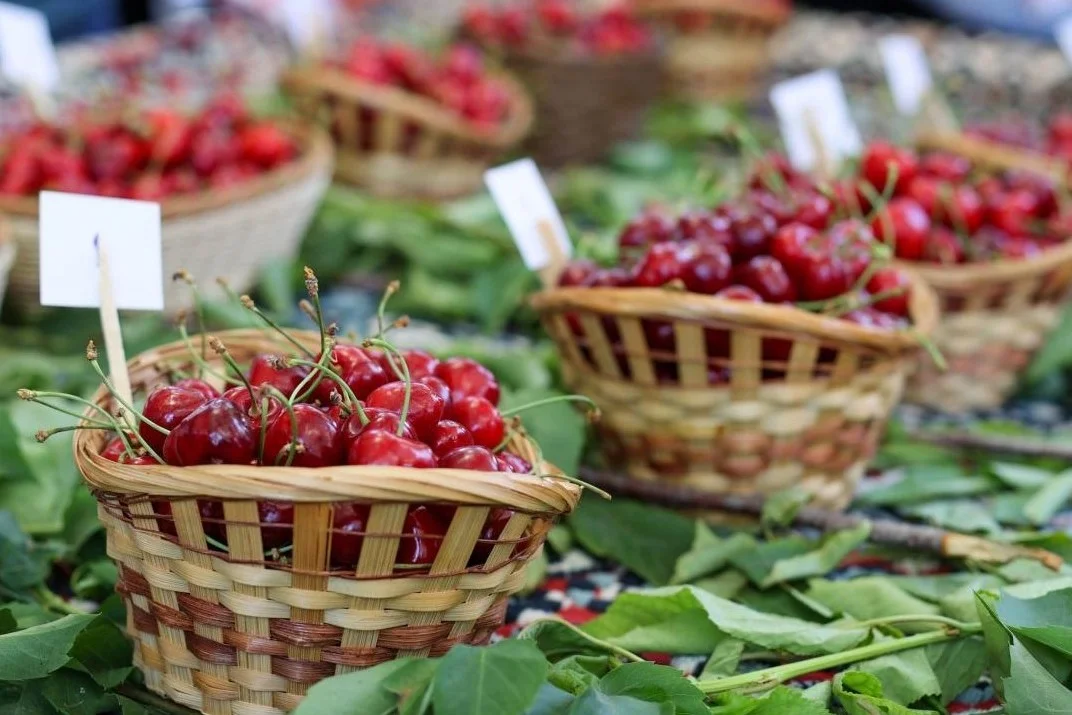
José Quero-Garcia - INRAE (FR)
Cherry Times technical-scientific committee
For how long have you been a sweet cherry breeder?
I did a PhD on sweet cherry that was initiated in 2007 but my first crosses were conducted on 2009. I participated to the first breeding program at IMIDA, Murcia, then I moved to the private company Atlantic Green in 2018 and since 2021 I work for HortiFrut (https://www.hortifrut.com/). With all these changes, I would say that our program has found a good stability and intensification since 2018.
What are the main goals of your program?
The main objectives are to produce cultivars that are early-ripening, low-chilling, productive, with high fruit quality and good post-conservation. This would allow to expand current areas of production and produce cherries since mid-March with the use of plastic covers. In terms of color, we favor dark red cherries but we are also interested in blush cherries.
 Gregorio Lopez-Ortega.
Gregorio Lopez-Ortega.
How many hybrids do you produce per year in average?
Our average in the last years has been of 1500 seedlings planted in the field. However, our current objective is to reach close to 5000 seedlings.
What are the main methods you use to create new materials?
We do hand pollination with emasculation, only if necessary, but we use as well natural pollinizers, such as bumble-bees. We can cover with insect-proof nets adjacent trees planted in the field, which are inter-compatible and with similar flowering date and by placing a bumblebee hive within the net. We can also cover potted trees next to one tree planted in the field, which then will serve as a source of pollen, or cover together potted trees from different cultivars.
One way of increasing efficiency is to use, as female genitors, cultivars with the same S alleles (hence incompatible) and as male genitor one cultivar with different S alleles. We can also achieve open pollination of our best selections but with the aim to produce hybrids that will further be used as new genitors.

Do you consider that the genetic diversity used in your genitors’ panel is sufficient to achieve your mid and long-term goals?
No, I believe no sweet cherry breeder has sufficient genetic diversity. In general, we are all pushed to meet criteria which are easy and short-term. We nevertheless have a collection of 150 commercial cultivars and around 100 landraces, some of them issued from different prospections. We have not introduced yet all known genetic sources for the low-chilling trait.
How many hybrids do you expect for each cross-combination? How many different crosses do you perform every year?
The objective is to produce between 150 and 200 hybrids per cross, although we are aware of the fact that this is highly ambitious for a crop such as sweet cherry. We conduct on average 50 different crosses per year. These numbers may vary depending on the type of cross with three clearly identified categories:
- top crosses, involving elite genitors.
- parental crosses, involving at least one genitor with a highly desired trait, such as low chilling requirements, but with fruit characteristics below the standards.
- exotic crosses, involving genitors from other species (inter-specific crosses) or sweet cherry genotypes highly specific.
 Fruit selection 1.
Fruit selection 1.
How is your program structured in terms of number of selection sites and number of plants per evaluated selection? Do you conduct multi-site evaluation in different countries?
We have two main selection sites, both in the province of Huelva (region of Andalucía): one at El Rocio, with less than 300 chilling hours and another one at Aroche, in a more mountainous area, with 700 chilling hours. All initial seedlings are planted on their own roots at Aroche and a copy of those with very low chilling requirements is planted at El Rocio. The rootstock used is Adara. Selections are replicated 4 times and planted in each site.
All materials, seedlings and selections, are cultivated under covers, which in general reduces firmness and productivity but improves fruit size. We also have less problems of double fruits. We plan in the near future to evaluate our best selections in other countries, such as Chile or China.
Do you use DNA-informed breeding at some level?
We use for the moment molecular markers to characterize our genitors and design our crosses as well as to conduct paternity tests for advanced selections. The use of markers for seedling selection has only recently been initiated with markers controlling color, fruit size and self-fertility, and only to cull a certain number of hybrids when the populations are particularly large.
These and markers related to flowering date, harvest date and firmness are also being tested within our populations in order to assess their potential value for our breeding program. We would also like to use markers related to fruit cracking tolerance.
 Fruit selection 2.
Fruit selection 2.
Do you have promising advanced selections ready to be commercialized soon?
We have a dozen of advanced selections and a few precommercial selections but they will not be commercialized before some years.
How many people collaborate directly with you?
I have four direct collaborators: one field manager and one assistant breeder in each breeding site but I collaborate with more than 10 people from the areas of genetics, quality, in vitro lab, product development, testing, branding, etc. Concerning the period of hybridizations, we work with up to 7 more people to emasculate and pollinate flowers every day during one month, in both experimental sites At the peak moments of harvest, we have up to 15 or 20 people to harvest all fruit from our materials, hence diminishing the problems generated by pests such as Drosophila suzukii.
What do you like most about your work?
Plant breeding is a passion for me and in sweet cherry it is even better. I like the idea that I do breeding for the future but selection for the present.
What are the main difficulties/constraints that you have found as cherry breeder?
One of the main issues is the problems derived from the tremendous influence that climate can have on cherry production. We have not only problems of lack of chill but also of differential quality of chill between years. This requires a very fine handling of plastic covers and shadowing nets, in particular during the flowering period.
Cherry Times - All rights reserved















